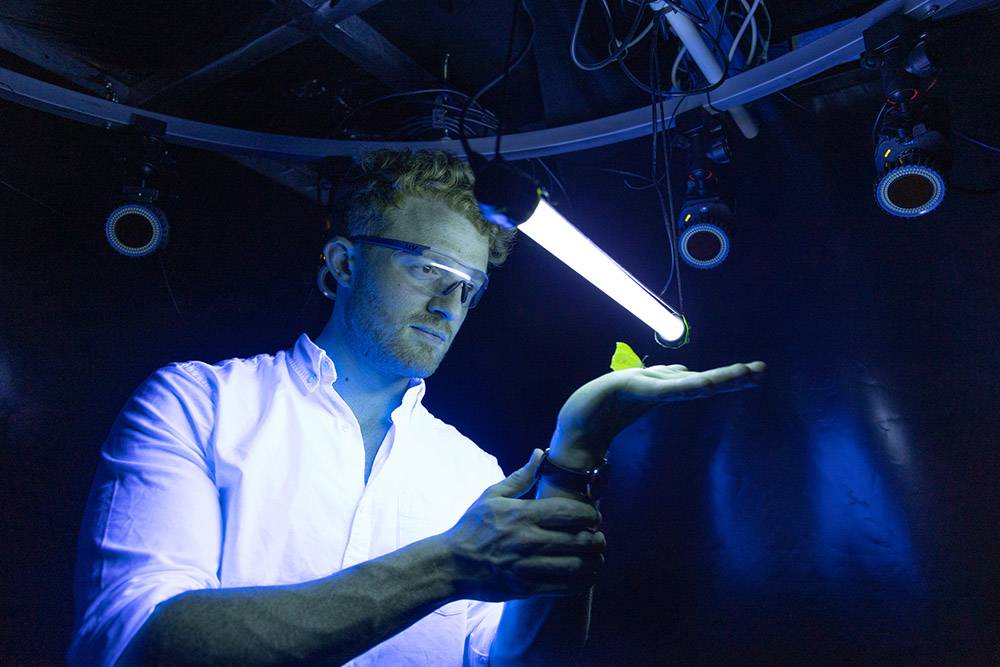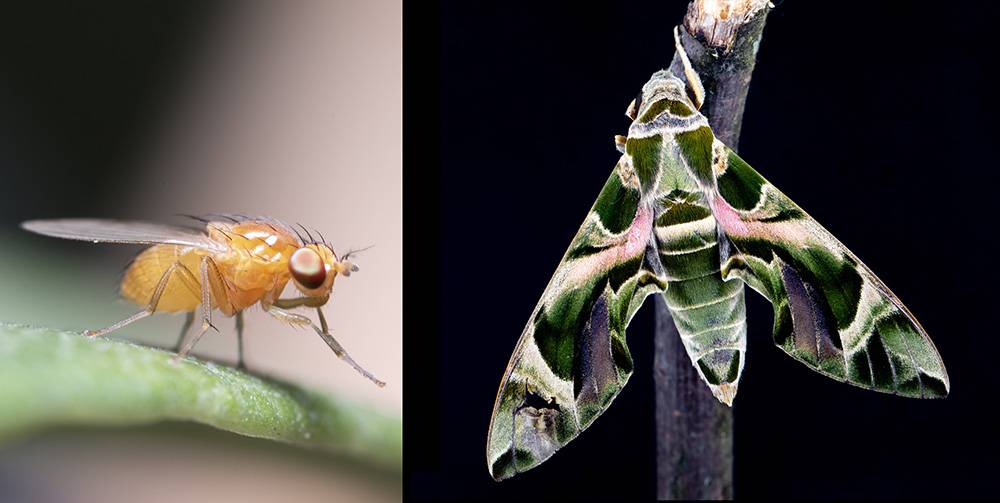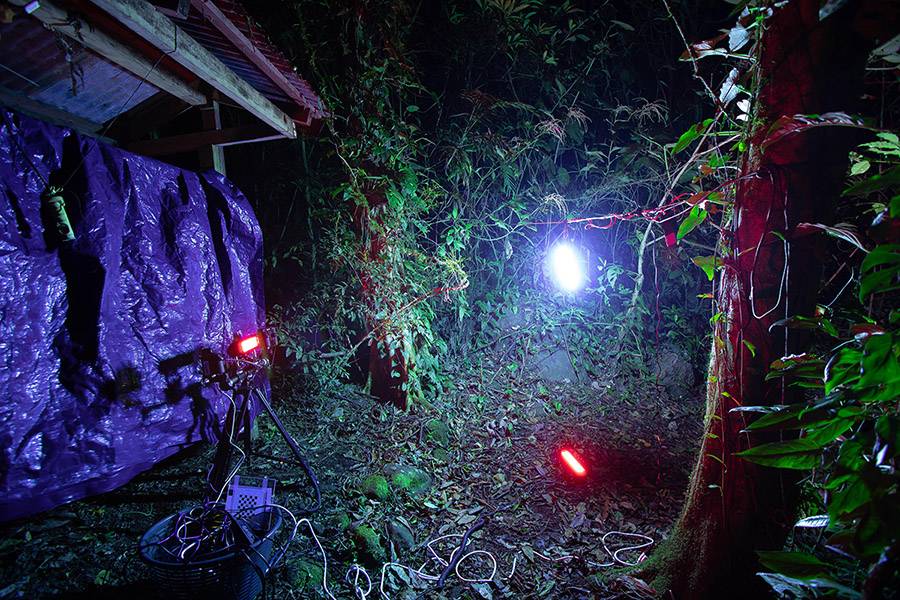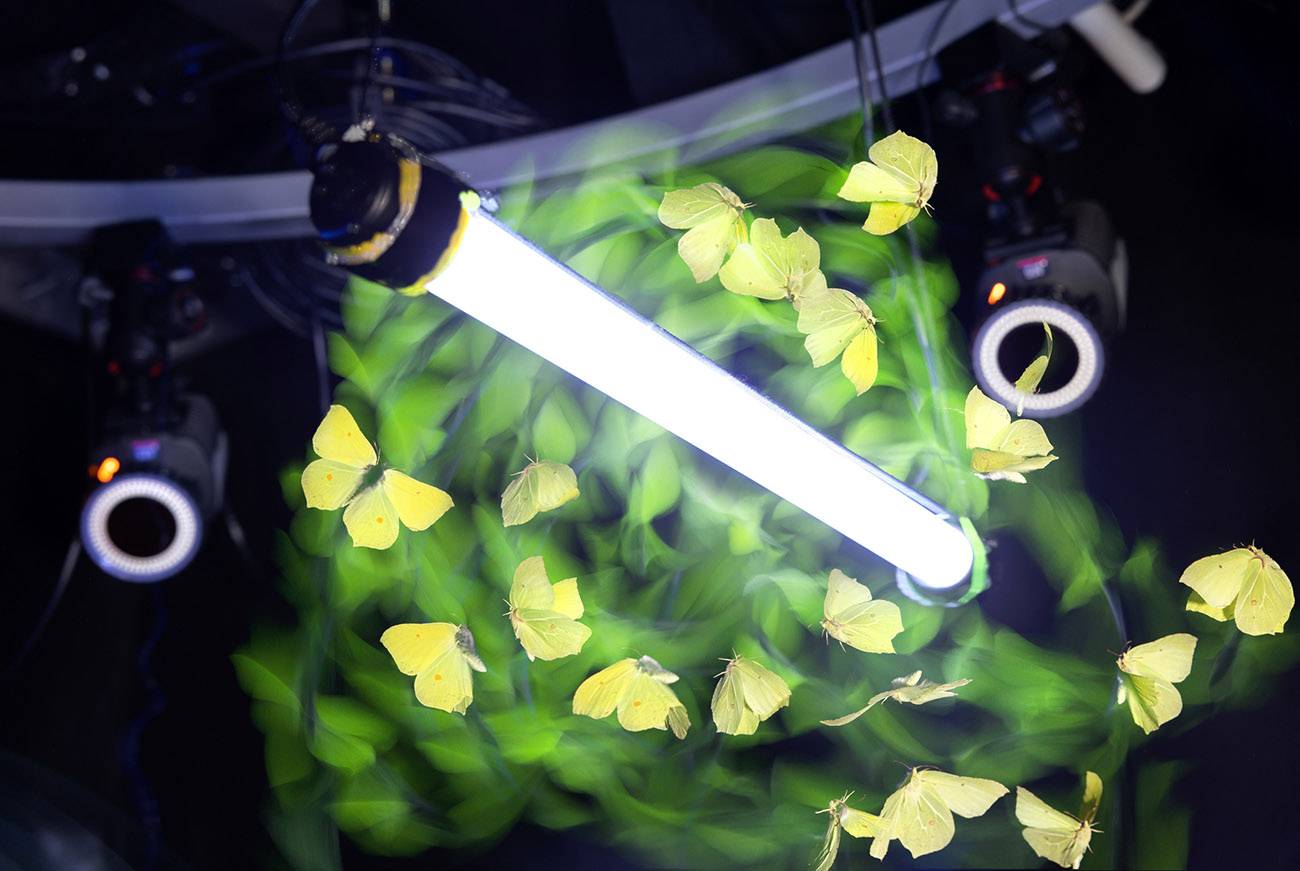Who hasn’t seen moths and other ‘insects’ fluttering around street lamps? It has long been known that the artificial light pulls the flying insects, and even during the Roman Empire it was used to trap them. However, the reason behind this behavior is not well understood and several possibilities have been proposed: the use of light as an escape route, that the light source blinds the insects or that they confuse it with the moon, and so on.
To investigate this mystery, an international team of researchers led by Samuel Fabian from Imperial College London (United Kingdom) and Yas Sondhi from Florida International University (USA) used high-speed cameras. With them they followed the three-dimensional flight of different species mothsothers butterflies, dragonflies and fruit fliesboth under laboratory conditions and in a natural environment: the Monteverde Biological Station, in Costa Rica.
The researchers studied its flight under different lighting conditions, including point sources of ultraviolet light and surfaces with a more diffuse glow.. In this way they verified that insects have a “dorsal response to light«, where he corrects his trajectory so that his back points towards the light source. This reduces their ability to orient themselves, according to the research published openly in the journal this week Nature communication.


Con natural light sourcesLike the sun or a starry night, this response ensures that the insect maintains a stable and correctly oriented flight path with its horizon. However, artificial light causes the flight to deviate and corrects irregularly, often circling around the focus.
“The most important finding is that insects confuse light with upward direction of the sky” Fabian explains, explaining: “Knowing where the air is is essential to fly, because you have to generate the forces that counteract gravity.”
“That’s why,” he continues, “this confusion It causes insects to tilt their bodies toward the light and direct their flight forces in the opposite direction of gravity. This leads to their complicated paths that we often observe near street lights. The most reliable evidence of this is that when they fly over a bright light, they turn around and fall from the sky.”

The results have also allowed it rule out some hypotheses that were considered and not tested: “We do not believe it is navigation using the moon, and we have also seen that insects do not fly directly to the light. Rather, it disorients them vertically and traps those who happen to pass by,” says the researcher.
It occurs in various insects
The team verified the same behavior in 10 different types of insects. “This makes sense, because everyone is faced with the same problem: figuring out where gravity is. When they fly, they cannot use ground reaction forces (as we do when walking), and when turning corners they experience all kinds of accelerations (g-forces), which are usually greater than those of gravity and do not differentiate. For example, direct detection via dangling legs is an inaccurate mechanism,” Fabian explains.
“But leaning your back to the light, and therefore to where you think the sky is, is a good way to stay in the right position in the air,” he points out. It is a robust and fast mechanism which does not require additional sensors. The insects “(Along with other animals, such as fish and marine invertebrates) use this response all the time around us to quickly lean in the right direction, a mechanism that remains very useful during the day.”
The dorsal response to light appears to be a reaction both during the day and at nightsaid the authors, who used diurnal and nocturnal insects to verify this.
Two exceptions among insects
However, researchers have found two exceptions to this behavior. The first was the fruit fly (Drosophila), which flew over the ultraviolet focus without leaning or turning towards it. The reason for this different behavior is unknown, but researchers around the world benefit when they use these flies for flight experiments, where lighting or visual environment do not seem to interfere.
The second exception was oleander sphinx (Daphnis nerii), which did not turn under ultraviolet light and showed no altered flight patterns in the laboratory. “This is especially strange because this species reaches the light traps in the field, but not in the laboratory,” says Fabian, “and one possible reason is that these moths have different flight modes (e.g. gliding versus high speed). “It is clear that insects have the ability to sometimes switch off the dorsal light response when it suits them, something we want to investigate further.”

Problem of light pollution and insects
Be that as it may, the zoologist remembers that for 370 million years the luz it’s been good direction indicator those insects when they fly, but lately we humans have been screwing up with night lights: “After we started putting big bright lights all over the place near our houses, it became a problem. Suddenly the brightest visual areas at night are not the sky, something that is extremely rare for them. But I want to make it clear that insects are not stupid; they are fantastically well adapted to function in the natural environment. The point is that we have changed the environment faster than they can adapt to it.”
Fabian emphasizes the “very negative” effects with night light for insect populations. “It not only attracts and traps them, but also interrupts their periods of activity. Nocturnal animals often go to sleep after bumping into a light, for example. “Insecticides and land use changes are likely to be even more devastating, but we still don’t know exactly how much damage this night light is causing.”

Next step: the long-range effects of artificial light on insects
The authors conclude that more research is needed the long-range effects of artificial lightand that we can improve the habitats of these small animals by reducing unnecessary artificial lighting at night.
“Our next big question is to know at what distance this effect starts to occur in different types of light,” says Fabian, who concludes: “Our current data is about 2 meters around the maximum of the light source, but we don’t know what happens at 20 m, 100 m or 1 km. Understanding this is key to conservation efforts and reducing the effect of light pollution on our nocturnal wildlife.”


